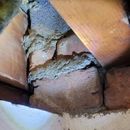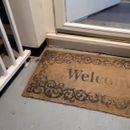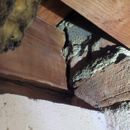Rigid foam and air sealing on rim joist embedded into townhome party wall
Climate zone 4, NYC metro area, so fairly rainy.
In my townhouse there’s a pretty significant air leak where the rim joist/sublfloor/partywall intersect at right side (you can see how dirty the fiberglass batt is). On the plus side, the moisture content is ok at the moment and no signs of wood rot, which I thought might be an issue during cold weather, especially on a NE facing wall.
Normally I would insulate with rigid board and air seal no problem except there are two issues that give pause: 1) the rim joist is partially embedded into the party wall and 2) part of the rimjoist is up against concrete stairs on the other side.
I’ve attached some pictures to give a better idea. Inside and outside picture.
So the main question is – would this rim joist be okay to air seal and insulate – or should I just focus on air sealing the major air leakage points.
Insulating would be fairly easy since all the other joists run parallel to the front/back foundation wall so I would just need one long strip of rigid foam.
GBA Detail Library
A collection of one thousand construction details organized by climate and house part












Replies
If it were my house, I would worry about changing this area. It's likely the embedded joists are in good condition because of the air movement. Is there room to build a new bearing wall inside the basement?
Thanks for the response Steve. You are probably right about the increased energy flow over this area has prevented any major problems - can't have water issues if it's evaporated from air flow.
As far as building a partition wall there - I sort of could, but the options are a bit limited. There are utilities and electrical conduits on this wall as well as a plumbing air stack even more left of this picture was well as forced air ducts and a dryer vent duct which run under the joists (to the left of the picture) . Edit: Also the water main enters to the left over in the corner as well.
I think the spray foam for major air leakages and leaving uninsulated and vapor open/air open insulation or no insulation is the way to go for this area - at least with the a non adhered insulation I have access to the board and can inspect fairly easily.
I'd be interested to see what the temperature is of the wood since only a small portion is actually above grade. Have to remember to bring my infrared gun home though.
There is some reason to be concerned with insulating this area, since the insulation is going to exacerbate any moisture problems and may make the wood more likely to rot and deteriorate. If you really want to insulate here, use a thin(ish) layer of EPS, under 1" thick and UNFACED. EPS is the most vapor open of the rigid foams, so it's safest to use here.
Even safer would be to inject some canned into the gaps to seal the air leaks, but leave the face of the wood uninsulated for maximum drying. You lose far more heat through air leaks than you do through heat flow through the wood itself.
Bill
Thanks Bill, this was exactly what I was looking for and about what I thought. The air seal only and no insulation/air open insulation (like the batts), but forgoing the vapor barrier insulation solution.
Definitely on point about the air leak - would really hate to see that joint under a blower door, without pressure it's fairly significant.